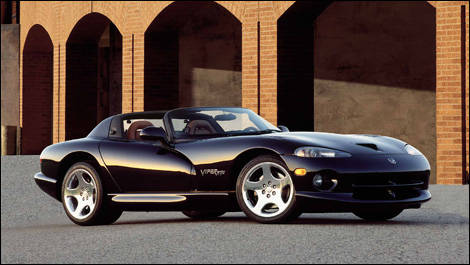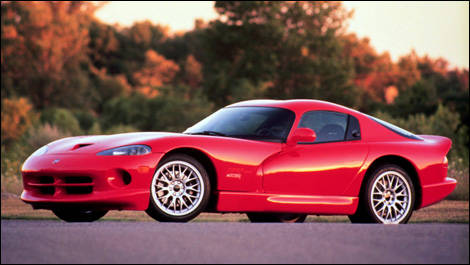"There's no replacement for displacement".
That statement is true in many circles, debatable in some, and downright blasphemous in others. You have to admit though, that the idea of an engine with the displacement of four Honda Civics is just damn cool, no matter who you are.
If that's your thing, there's only one car that does it- the Dodge Viper. The original models were often bought as a novel weekend car, a racing machine, or just to own a bit of history or nostalgia, as they were intended to recall memories of the Shelby Cobra from days gone by.
And like days gone by, Vipers are a low-tech, back to basics performance machine. But depending on the year and model Viper you might be looking for, there are some important things to know. Here's a look at some of the problems, challenges and issues of owning one- and what you can expect if looking for a used example.
First off- the engine. It's got eight litres, ten cylinders, and makes 400 or more horsepower while throwing enough heat to put owners in the market for some asbestos shoes. Surprisingly, it actually gets decent fuel economy.
Just kidding- this machine sucks harder than getting fired and dumped on your birthday.
In 1992, Viper took to the streets with 400 horsepower. By time 1996 rolled around, an upgraded 450 horsepower engine was on the scene. It's dead simple- there's one camshaft in the block, 20 valves on top and some accessories- little else. Same approach goes with the electronics, as antilock brakes were only available on later models, and stability control wasn't available at all.
Some digging revealed the 8.0 litre mill to be a relatively reliable gas guzzler- with commonly reported problems consisting mainly of oil leaks from the pan, and overheating in traffic. Some early models were prone to leaky head-gaskets.
The transmission, a six-speed manual, was built by Borg Warner and is also generally worry-free and able to work reliably under tough conditions. A common modification removed the skip-shift function which forces a 1 to 4 shift unless the throttle is depressed hard. This saved on emissions during docile driving.
That statement is true in many circles, debatable in some, and downright blasphemous in others. You have to admit though, that the idea of an engine with the displacement of four Honda Civics is just damn cool, no matter who you are.
If that's your thing, there's only one car that does it- the Dodge Viper. The original models were often bought as a novel weekend car, a racing machine, or just to own a bit of history or nostalgia, as they were intended to recall memories of the Shelby Cobra from days gone by.
 |
And like days gone by, Vipers are a low-tech, back to basics performance machine. But depending on the year and model Viper you might be looking for, there are some important things to know. Here's a look at some of the problems, challenges and issues of owning one- and what you can expect if looking for a used example.
First off- the engine. It's got eight litres, ten cylinders, and makes 400 or more horsepower while throwing enough heat to put owners in the market for some asbestos shoes. Surprisingly, it actually gets decent fuel economy.
Just kidding- this machine sucks harder than getting fired and dumped on your birthday.
In 1992, Viper took to the streets with 400 horsepower. By time 1996 rolled around, an upgraded 450 horsepower engine was on the scene. It's dead simple- there's one camshaft in the block, 20 valves on top and some accessories- little else. Same approach goes with the electronics, as antilock brakes were only available on later models, and stability control wasn't available at all.
Some digging revealed the 8.0 litre mill to be a relatively reliable gas guzzler- with commonly reported problems consisting mainly of oil leaks from the pan, and overheating in traffic. Some early models were prone to leaky head-gaskets.
The transmission, a six-speed manual, was built by Borg Warner and is also generally worry-free and able to work reliably under tough conditions. A common modification removed the skip-shift function which forces a 1 to 4 shift unless the throttle is depressed hard. This saved on emissions during docile driving.
 |


